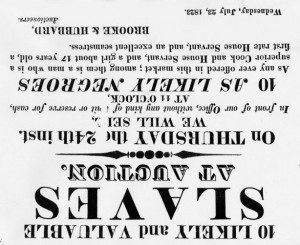A portrait can be perfectly rendered — accurate in every detail, offering penetrating insight into the character of its subject. But such a portrait will still be confusing if we hang it upside-down. The truth of it will become disorienting because it will be disoriented. We don’t need to correct the portrait, we just need to flip it around.
That, I think, is the problem with most of our theological and/or historical discussion of American slavery and American “biblical” Christianity. It paints an accurate portrait, but it hangs it wrong-side up. Last week, I discussed what I thought this means for historian Mark Noll’s invaluable writing on what he calls the “theological crisis” of the Civil War:
The perverse part of that argument and that narrative is this: It asserts that pre-1865 “biblical” Christians approved of slavery because of the way they read their Bibles. That’s not true. That’s the opposite of what is true. Pre-1865 “biblical” Christians read their Bibles the way they did because they approved of slavery
Here’s another example of the same thing, from a terrific post at the Anxious Bench titled “Evangelical Anti-Abolitionists.” John Turner offers a fascinating discussion of Luke Harlow’s book Religion, Race, and the Making of Confederate Kentucky. Turner, like Noll, is really smart and he knows his stuff. And it sounds like Harlow’s book is something I’d love to read. Both Harlow’s history and Turner’s discussion of it are insightful and instructive.
Yet they still seem to get this one key point backwards and upside-down:
Harlow seems to agree with Mark Noll that most evangelicals could not break free of a biblical hermeneutic that led them to support slavery, at least in the abstract. Kentucky’s evangelicals believed that “a commonsensical, plain reading of the Bible revealed the Christian God’s sanction for slavery.” …
As Harlow notes, one could ask whether it was exactly a “faulty hermeneutic” that explains the failure of most white evangelicals to actively oppose slavery. Racism clearly “pervaded proslavery [and anti-abolitionism] Christianity.” One needed more than a “Reformed, literal hermeneutic” (Noll’s phrase) to presume that Genesis 9 sanctioned black slavery, for instance. Harlow also seems to think Noll too “sanguine about the possibilities of alternative hermeneutics to solve the Bible-and-slavery dilemma.” Of course, in Kentucky most white evangelicals simply saw no dilemma about slavery or white supremacy. One must at least conclude that the way that most white American evangelicals read the Bible did not lead them to oppose glaring social injustices. Instead, they tended to sanctify those injustices.
The first sentence there, and the last two, paint the picture backwards and upside-down. The problem was not that white evangelicals “could not break free of a biblical hermeneutic that led them to support slavery,” but that they were committed to support for slavery and therefore devised and adopted a hermeneutic that allowed and encouraged them to continue doing so.
Their hermeneutic did not lead to support for slavery. Support for slavery led to their hermeneutic.

It doesn’t matter what descriptors they chose to apply after-the-fact to defend that pro-slavery approach to the Bible. Calling it “Reformed” and “literal” doesn’t change the purpose for which it was designed. Nor does calling it “commonsensical” and “plain.” The fact is that it was an approach to the Bible — an idea of “biblical” — that only permitted a single “conclusion” about slavery because that conclusion wasn’t a conclusion at all. It was their premise.
Turner writes: “The way that most white American evangelicals read the Bible did not lead them to oppose glaring social injustices.” No. The acceptance of glaring social injustices led to “the way that most white American evangelicals read the Bible.”
That was true in 1865. And it was true in 1965. And it remains true in 2015.
White American evangelicals today still read the Bible the same way that those antebellum “biblical” Christians did. They still insist that this is a “commonsensical, plain reading” or a “Reformed, literal hermeneutic.” But that’s not where it comes from. It comes from our need to accommodate, condone, support and participate in glaring social injustices.
One weird result of this history is that white American evangelicals, today, unanimously condemn slavery, but most are unable to say why. They read the Bible with the same “commonsensical, plain reading” that was used 200 years ago. That way of reading the Bible can only produce one conclusion about whether or not slavery is biblical. It provides a meaning for the word “biblical” that ensures no other conclusion is possible.
And yet, unlike 200 years ago, you won’t find evangelicals today reciting the long litany of pro-slavery prooftexts that their “biblical Christian” forebears cited to prove that slavery was “biblical” and therefore right and good. Turn to almost any other subject — women’s equality, same-sex relationships — and these evangelicals will insist that the only acceptable approach to the matter is to debate the proper exegesis of the relevant biblical prooftexts. But they’ve stopped doing that with slavery ever since Appomattox.












